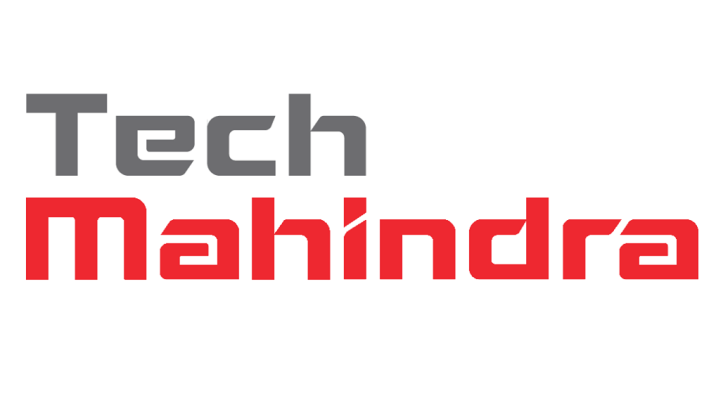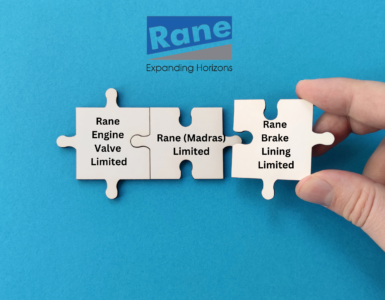Tech Mahindra completed Satyam’s merger with itself. The merged entity will be called Tech Mahindra and Mr. Anand Mahindra will be its Chairman. Tech Mahindra Managing Director, C. P. Gurnani announced that the swap will be in the ratio of two shares of Tech Mahindra for every 17 shares of Satyam held. The Andhra Pradesh High gave its nod for the much-awaited merger of Mahindra Satyam with its parent firm Tech Mahindra removing the final hurdle in the union of the two companies that will produce the fifth largest entity in India’s information technology (IT) industry. Firstly let us get acquainted with the two entities:
About Tech Mahindra:
Tech Mahindra is a leading provider of solutions and services to the telecommunications industry with a majority stake owned by Mahindra & Mahindra Limited, in partnership with British Telecommunications Plc. Tech Mahindra serves telecom service providers, equipment manufacturers, software vendors and systems integrators worldwide and their proven delivery models, distinctive IT skills and decades of domain expertise enable clients to maximize returns on their IT investment.
Tech Mahindra has principal offices in the UK, United States, Germany, UAE, Egypt, Singapore, India, Thailand, Taiwan, Malaysia, Philippines, Canada and Australia. Tech Mahindra Ltd is part of the US $14.4 billion Mahindra Group, a global industrial federation of companies and one of the top 10 business houses based in India.
Tech Mahindra acquired Satyam Computers through a government-mediated auction in April 2009 after a multi-billion dollar scam by its founding Chairman B Ramalinga Raju was unearthed
About Mahindra Satyam:
Mahindra Satyam is a leading global business and information technology services company that leverages deep industry and functional expertise, leading technology practices, and an advanced, global delivery model to help clients transform their highest-value business processes and improve their business performance.
Mahindra Satyam is part of the $14.4 billion Mahindra Group, a global federation of companies and one of the top 10 business houses based in India. Mahindra operates in the key industries that drive economic growth, enjoying a leadership position in tractors, utility vehicles, information technology, vacation ownership, rural and semi-urban financial services, etc. Mahindra has a significant and growing presence amongst others, in the automotive industry, agribusiness, aerospace, automotive components, consulting services, defense, energy, industrial equipment, logistics, real estate, retail, steel and two wheelers.
Mahindra Satyam development and delivery centers in the US, Canada, Brazil, the UK, Hungary, Egypt, UAE, India, China, Malaysia, Singapore, and Australia serve numerous clients, including many Fortune 500 organizations.
About the Merger:
Tech Mahindra acquired Satyam Computers through a government-mediated auction in April 2009 after a multi-billion dollar scam by its founding Chairman B Ramalinga Raju was unearthed.
The Board of Directors of Tech Mahindra and Mahindra Satyam had approved the Scheme of Amalgamation at their respective Board Meetings held on 21st March 2012.
Appointed Date fixed for the Scheme: 1st April 2011
The Scheme was approved by the Bombay High Court on the grounds that,
- The Scheme would also be subject to the approval of the Andhra Pradesh High Court.
- The Scheme appears to be fair and reasonable and is not violative of any provisions of law and is not contrary to public policy.
- Also, none of the parties concerned had come forward to oppose the Scheme before the Bombay High Court.
The decision was since pending for the receipt of approval from the Andhra Pradesh High Court.
Reasons for stalling of the Merger for the approval of Andhra Pradesh High Court:
The figure Rs 1,230.4 crore appearing in the 2011-12 Balance Sheet of Mahindra Satyam had put brakes on the company’s merger with Tech Mahindra.
The Rs 1,230.4 crore was ostensibly advanced temporarily to Satyam Computer Services in 2008 by several companies owned by close family members of the company’s disgraced founder, B. Ramalinga Raju. Thirty-seven companies had filed civil suits in a Secunderabad court, claiming the money, which is now in a Suspense account. Venkateswar Reddy, representing IL&FS Financial Services Ltd, which owns less than one percent of Mahindra Satyam, demanded that the Rs 1,230.4 crore be recorded as “unsecured loans”, and that the 37 companies owned by Raju’s relatives be recognized as Mahindra Satyam’s “creditors”.
Another Suspense account lurked in the books of Mahindra Satyam. The forensic audit by Deloitte and KPMG teams in 2009 unearthed a surplus of Rs 1,139.3 crore. Ever since the Hyderabad-based IT company has recorded the sum on its balance sheet as “unexplained differences suspense account”.
Things went reasonably smooth with the merger proposal until December 2012. It was cleared by the companies’ boards and shareholders, the Competition Commission of India, and the Bombay High Court. But on December 6, when it came up before the Andhra Pradesh High Court, Mahindra Satyam’s official liquidator M. Anil Kumar said he could give no opinion on the company’s financials because of the complexities arising from the two suspense accounts. Judge P.V. Sanjay Kumar ordered fresh scrutiny of the audited numbers.
Also, some minority shareholders in Mahindra Satyam had filed writ petitions in the AP High Court, contesting the swap ratio– two Tech Mahindra shares (face value Rs 10) for every 17 shares of Mahindra Satyam (face value Rs 2) – announced with the merger. The petitioners said that the swap ratio was unfairly based on Mahindra Satyam’s 2010/11 financials, rather than its better performance in 2011/12. They pointed out that Mahindra Satyam is doing better than Tech Mahindra, so they deserved a better deal.
The Verdict:
Judge N.R.L. Nageswar Rao dismissed all petitions seeking to bar the merger on the grounds that the scheme of amalgamation is in the interest of the public and the shareholders and the interest of the workmen is also protected. He ordered that the scheme of amalgamation—a detailed merger plan—be filed with the Registrar of Companies within 30 days.
The high court, while sanctioning the merger, said pending investigations and prosecution against Ramalinga Raju and others will continue. Tech Mahindra should co-operate with investigating agencies such as the Serious Fraud Investigation Office and Enforcement Directorate, it said. The scheme of amalgamation of the two companies would be backdated to April 2011 as per the terms of the merger
Analysis of the Approval granted by Andhra Pradesh High Court:
For a Scheme of Arrangement sought under section 391 of the Companies Act, 1956 the Court must see whether the provisions of the Act have been complied with, whether the majority is bona fide and whether the scheme is a reasonable one. In this case, the Judge found the Scheme to be a reasonable one and in the interest of the public.
Also, the Court should not refuse to sanction the Scheme merely because of a few objectors. In this case, the Court dismissed the objections of the stakeholders as the role of the Court is just supervisory and the Court cannot ignore the opinion of experts who have worked upon the Swap Ratio and when the same has been accepted by majority shareholders. Valuation is a technical method requiring expertise and there can be genuine differences of opinion about the correct Swap Ratio. Unless the person who challenges the valuation satisfies the Court that the valuation is unfair, the Court will not disturb the scheme of amalgamation.
The Court also ordered that all pending investigations against Ramalinga Raju will continue till they are vacated or disposed of by relevant competent authority and Tech Mahindra should cooperate with all the respective agencies which Tech Mahindra agreed to readily.
Conclusion:
For Tech Mahindra, the operational merger with its affiliate will help reduce its dependence on the telecom sector, which now contributes 97% of its revenue, a share that will fall below 50% in the combined entity.
For Satyam, the union may help finally put behind it the scandal that its founder B. Ramalinga Raju caused when, in January 2009, he confessed to having misstated accounts to the tune of Rs7,136 crore over a period of several years. His confession triggered a flight of employees and client defections that resulted in the sale of the firm he founded in 1987 and built into India’s fourth largest software services provider. This merger results in the dilution of the Satyam brand name so whatever negative connotation that brand name had will be dissolved.




